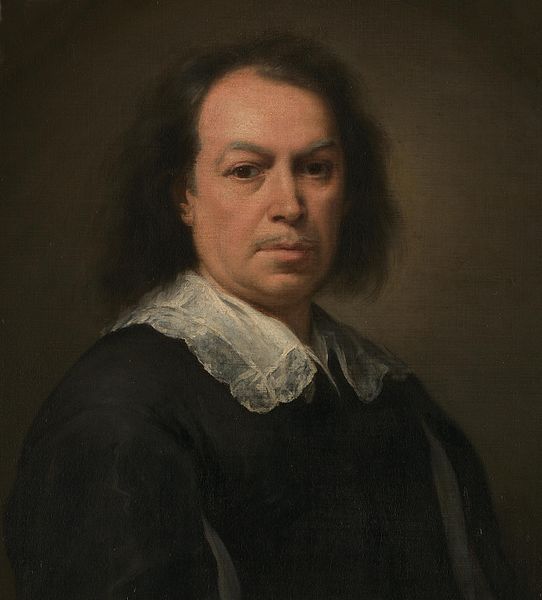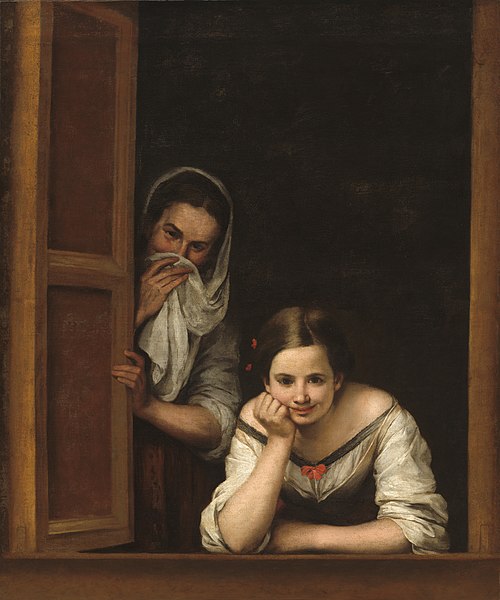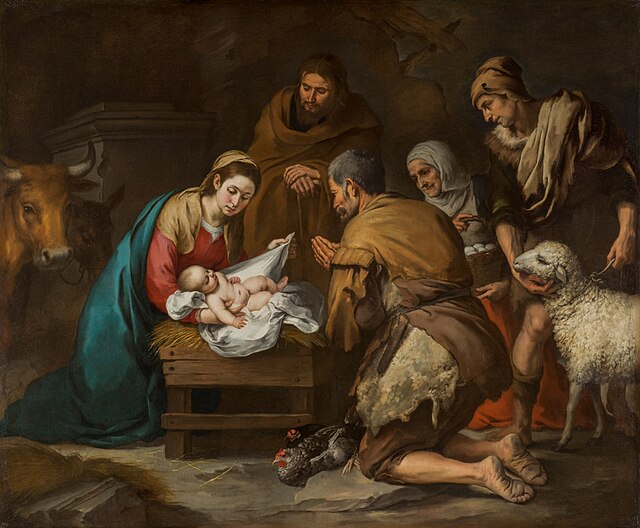Francisco de Zurbarán was a Spanish painter. He is known primarily for his religious paintings depicting monks, nuns, and martyrs, and for his still-lifes. Zurbarán gained the nickname "Spanish Caravaggio", owing to the forceful use of chiaroscuro in which he excelled.
Probable self-portrait of Francisco de Zurbarán as Saint Luke, c. 1635–1640
1633 portrait of Francisco Zumel
Saint Francis in Meditation, 1639, National Gallery, London
Still Life with Lemons, Oranges and a Rose, 1633, Norton Simon Museum
Bartolomé Esteban Murillo
Bartolomé Esteban Murillo was a Spanish Baroque painter. Although he is best known for his religious works, Murillo also produced a considerable number of paintings of contemporary women and children. These lively realistic portraits of flower girls, street urchins, and beggars constitute an extensive and appealing record of the everyday life of his times. He also painted two self-portraits, one in the Frick Collection portraying him in his 30s, and one in London's National Gallery portraying him about 20 years later. In 2017–18, the two museums held an exhibition of them.
Self-portrait, c. 1670–1673 (detail), National Gallery, London
The Holy Family with a Little Bird, c. 1645–1650, Museo del Prado
Two women at a window, c. 1655–1660, National Gallery of Art, Washington, D.C.
The Adoration of the Shepherds, c. 1650, Museo del Prado








